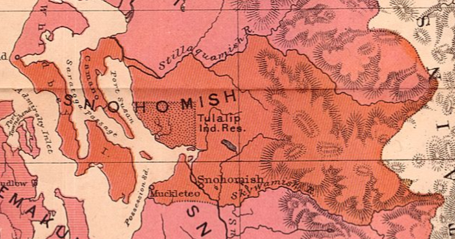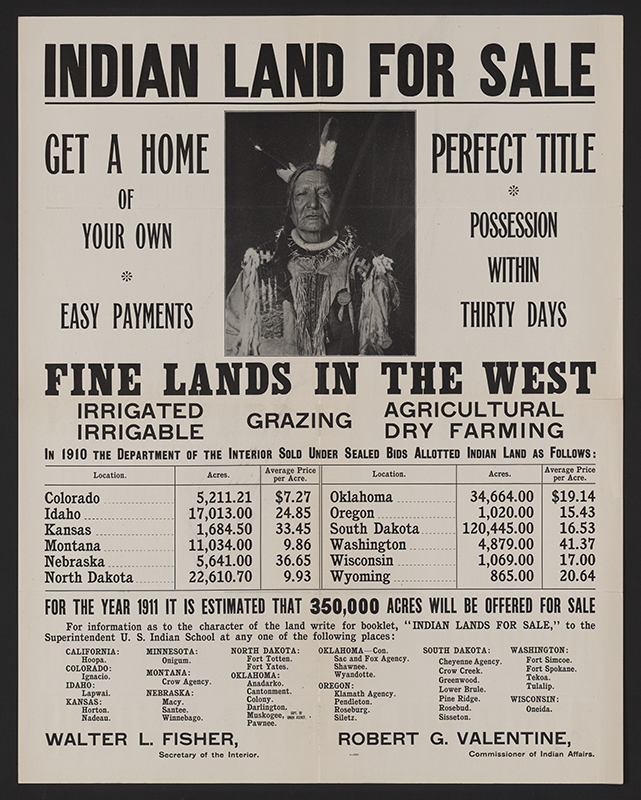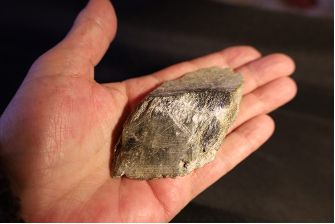Towards Becoming an Anti-Racist Organization: The Coast Salish People (sduhubš)
October 25, 2024
A guest column by Kyle Walker, Project Manager, South Whidbey Historical Society
From time immemorial, the Coast Salish Snohomish People (sduhubš) and their ancestral homelands on South Whidbey (known by the Coast Salish people as Tscha-kole-chy) occupied three permanent villages, countless seasonal camps, and the bluffs and shorelines from Greenbank down to Clinton.

Their territory extended across Puget Sound into Snohomish County, part of King County, Hat Island, and South Camano Island. Their network of 27 to 34 villages were connected by a shared patrilineal descent—their ancestors were their treasured heirlooms. They carefully managed and cultivated the land, sea, and rivers surrounding them and were provided with the gifts of food, shelter, clothing, and medicine—and the means for transportation and trade.
November is National Native American Heritage Month, passed by Congress and signed into law in 1990. It is an opportunity to turn our attention toward learning about the sacred traditions, seasonal life cycles, stories, and legends of the Indigenous First People. We honor their culture and recognize their skills as artisans, hunters, astronomers, botanists, mariners, traders, and responsible stewards of natural resources.
Each of their three permanent villages on South Whidbey had a potlatch gathering house, one or more residential long houses (each with 10 or more families) and cemeteries. While there are no remnants left of these villages, historic records and oral histories paint a picture of their social, economic and ancestral family associations.
D’GWAD’wk (‘in the basket’) was oriented south at Cultus Bay facing Puget & Possession Sound. It was the largest village renowned for its wealth as inter-tribal traders working on behalf of the Hudson Bay Company, British, and U.S. Territorial government based in South Puget Sound. Territorial government representatives surveying the area in 1854 estimated a population of 299.
TSEHT-skluhks (‘ragged or slashed nose’) was situated toward the north at Sandy Point facing Saratoga Passage. It was a seasonal destination for tribes from eastern Washington who were given permission to harvest the rich clamming beds in exchange for sheep wool and elk skins. In the late 1700s, British Explorers sailing past the village observed at least 200 people at this location.
SHET’LH-shet-lhuts (‘burnt leaves’) located at Bush Point facing Admiralty Inlet to the west, was known for its prolific and seasonal salmon runs hosting tribes from Jefferson and Clallam Counties. There are no historic references to the population of this site which was the most remote and least populated.

By the 1840s, the Snohomish People on South Whidbey began to be displaced by colonial settlers and targeted by the US Government who saw economic value in the land and its resources—most especially timber. The Point Elliott Treaty, signed in 1855 in Mukilteo, ceded all historic lands of the Snohomish and other tribes. This methodical and deliberate treaty process was practiced by the U.S. Government since the late 1700s. The intent was to assimilate Indigenous people into the reservation system and extinguish their cultural traditions.
One of the sacred cultural traditions of the Snohomish People that was targeted was the potlach—celebrated for centuries before the Pilgrims’ 1621 harvest meal now associated with Thanksgiving. Considered a spiritual event, gifts and possessions were given away or destroyed to display their wealth and enhance their interconnectedness with all beings.
By the 1880s, the potlatch was legally banned in Canada, Alaska, Oregon and Washington. These powerful, spiritual ceremonial gatherings were seen as too empowering, risking the ability to assimilate the Indigenous into the reservation system. Their regalia and sacred heirlooms were confiscated and burned in front of family members, while others were arrested. Potlaches were decriminalized in Washington State in 1934.

Between the 1930s and the 1960s, archaeologists, ethnographers, and historians began to remove the veil of the historic record which had been suppressed by religious and US government organizations. Cultural traditions are being revived and practiced by descendants including the potlach, naming ceremonies, and the arts—carving, canoe building, weaving, language, etc.
Here on Whidbey, residents pride themselves on being enlightened, sharing their wealth and volunteering time to help others—echoing the spiritual beliefs of the potlatch. This year, consider giving thanks to, and recognizing the historic contributions of, the Coast Salish Snohomish people.
Become a caretaker of this rich and valuable history!
Learn more about the history and current activities of the Coast Salish Snohomish people on the Hibulb Cultural Center. For more information on how to engage and learn more contact the South Whidbey Historical Society at 360-221-2101; [email protected].
Kyle Walker, a resident of Freeland, is a Board Member with the Washington Trust for Historic Preservation. She serves as volunteer Advising Historian and Project Manager for the South Whidbey Historical Society.
